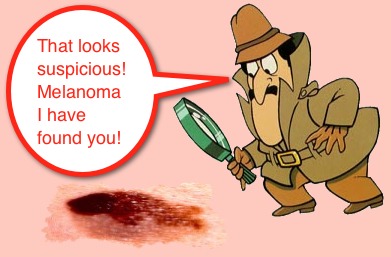Melanoma in Kids
So, while many of us don’t want to admit it, a lot of what we do in the Emergency Department does not specifically qualify as an “emergency.” Of course, while what constitutes an emergency is somewhat relative to the individual, for those issues that aren’t meeting our standards of what an emergency is, it is easy to become judgmental and crass.
Some, non-emergent conditions, however, do benefit from our attention. Many times your keen eye can help detect smoldering problems that could become more significant medical issues. Being able to keep an active pursuit of hidden illness will allow you to pick up on diabetes before it presents as DKA. Another great example is Malignant Melanoma. Simply inspecting the skin can save a life! And in kids, it is generally a lot easier to see all of their skin than in adults (bonus of working with kids!).
Malignant Melanoma in Children
Basics
- It is the most common skin cancer in those <20 years of age.
- While absolute numbers define it as a rare condition, it has been increasing in incidence.
- Recent study (Pediatrics 2013) demonstrates that the incidence of melanoma has been increasing each year since 1973.
- Overall, pediatric melanoma increased by an average of 2% per year.
- Highest incidence rates where in:
- Girls
- Kids 15-19 years of age
- Low UV-B exposure (tanning beds use UV-A)
- Boys had increased incidence rates on face and trunk.
- Girls had increased incidence rates on lower limbs and hips.
Risk Factors
- Fair skin, light colored eyes/hair (this is why I paint my children with Sunscreen even when it is snowing!)
- White race
- Female gender
- Increased number of nevi
- Increased number of childhood sunburns
- Family history of Melanoma
- INDOOR TANNING!! (we know that the sun can be dangerous… so now we use artificial suns!)
Why should an EM MD care?
- Five-year survival is currently ~100% for cases diagnosed early, while in localized stages.
- Survival drops to 82% for cases diagnosed in regional or distant stages.
- Early detection is obvious important.
- It may be the patient’s ankle pain that leads to the ED visit, but it will be your vigilance and keen eyes and mind that saves his or her life.
- Additionally, the recent publication of the increasing rates of melanoma in children will lead many to seek care where they can (often that is an ED) and many will have questions.
When should I be concerned?
- Melanoma in kids looks similar to that in adults.
- ABCD’s of Melanoma
- Asymmetrical
- Borders are Irregular
- Coloration is uneven – Also be aware of moles that have been changing colors.
- Diameter > 6mm (the head of a pencil eraser)
Interesting Fact
- Increasing incidences of melanoma had also been reported in Australian children from 1983 to 1996, but a sun protection education campaign helped lead to a decreased incidence trend.
- Once again, the Aussies seem to figure these public health issues out better than my American counterparts.



Thanks for the heads up that people with fair skin, light colored eyes, and/or light colored hair have higher chances of getting melanoma. Reading your article gave me enough reason to find the nearest medical facility that offers melanoma cancer services. With their help, they can decrease its chances of infecting one or some of my children.